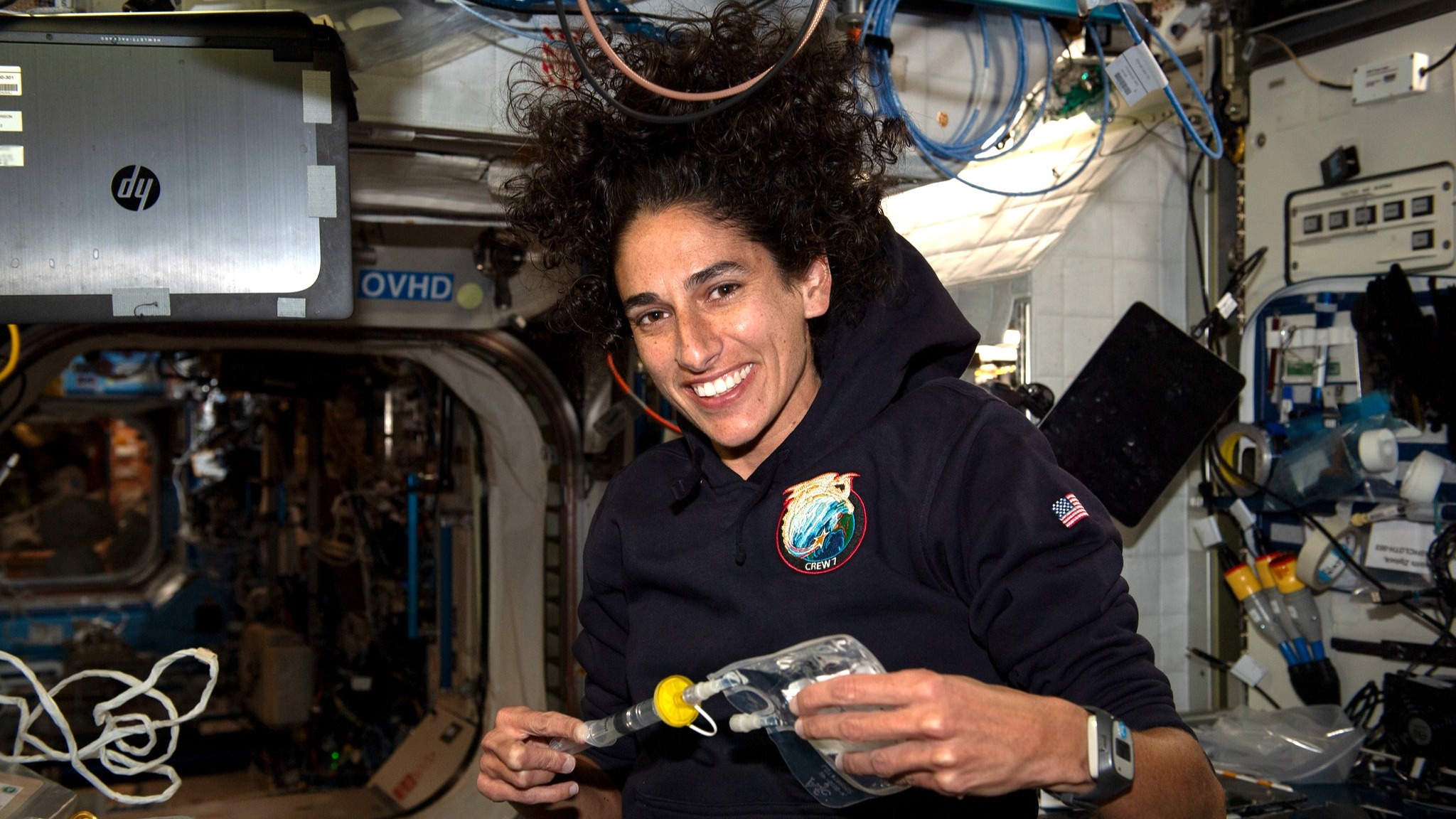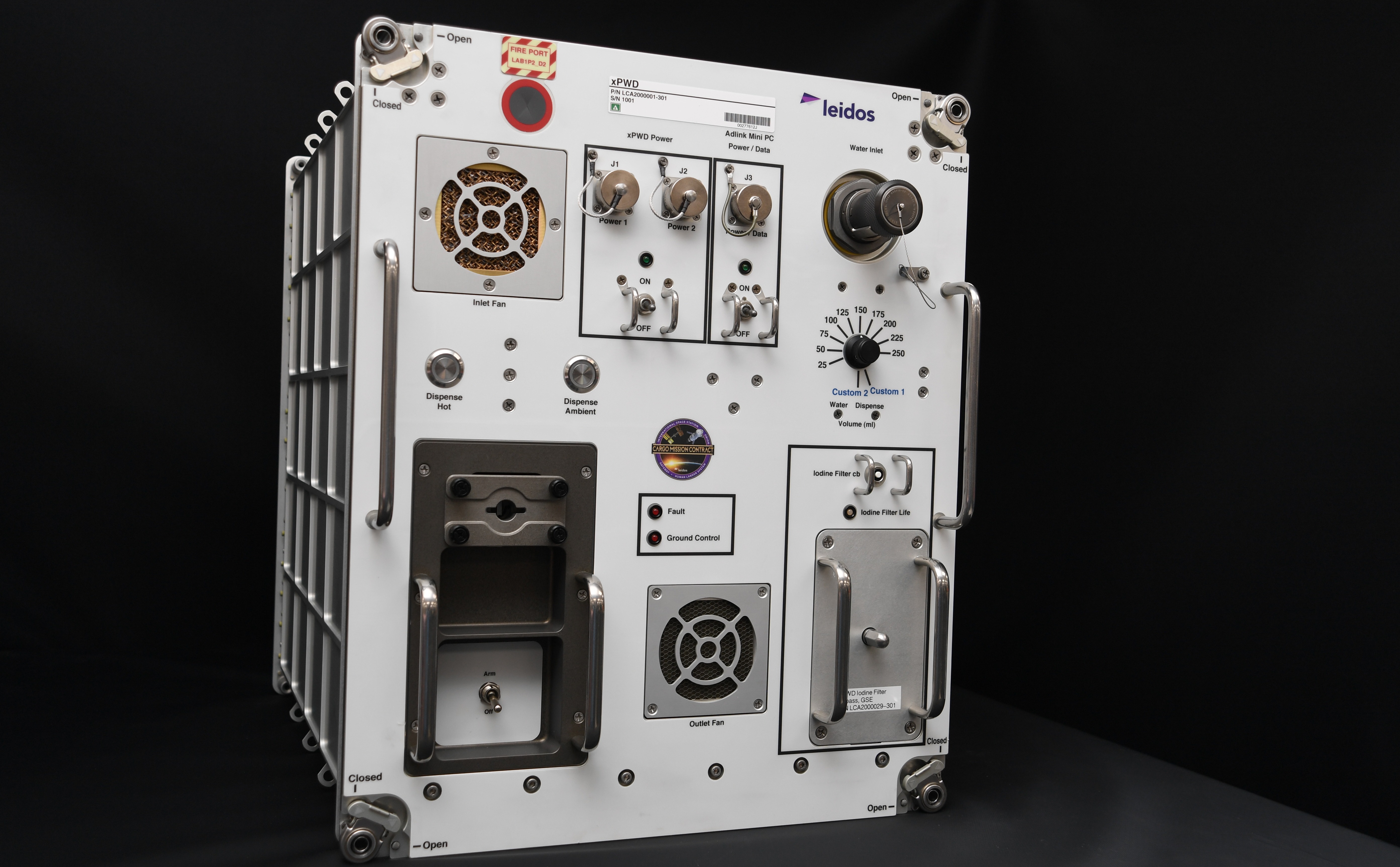
A new water-dispensing system on the International Space Station aims to test out technology that could help astronauts explore the moon.
The roomy International Space Station is described by NASA officials as larger than a six-bedroom house. Astronauts flying to the moon in this decade with NASA's Artemis program will not have nearly as much room in the Orion spacecraft, in lunar landing vehicles or in NASA's smaller Gateway space station planned for lunar orbit.
So everything will need to shrink for Artemis moon work: food preparation stations, exercise equipment and medical kits. Toward this end, a new potable water dispenser built by the company Leidos flew to space aboard Northrop Grumman's Cygnus cargo spacecraft on Aug. 1, 2023 as part upgrade, part lunar tech demonstration. (A previous generation of U.S. water dispenser was delivered to the ISS in 2008 and remains functional.)
The new design "tackled some of the more significant Artemis mission challenges, including longer duration (water) stagnation periods and reducing limited life items," said Deborah Wells, division manager at Leidos, in an email to Space.com. Leidos works in fields including civil, defense, health and intelligence; in the field of space exploration, the company says it has been working for 50 years in information technology, engineering and science.
Related: Can NASA's Artemis moon missions count on using lunar water ice?
With the addition of the new dispenser, ISS astronauts now have at least three locations where they can find drinkable water: in the Russian Zvezda module, in the U.S. Unity node and now in the U.S. Destiny module. (Nauka, a Russian experiment module that arrived at the space station in 2021, also has galley capabilities, according to media reports at the time.) The growing capability will help as crew numbers continue to grow on the orbiting complex, Wells emphasized.
Water dispensers are essential items in space that have been used for generations. Crew members depend on these systems for drinking, as well as hydrating dry food and performing scientific experiments. Leidos estimates it took roughly four hours for crew members to set up the system in Destiny. The procedure involved removing the unit from stowage, placing it in a payload rack, connecting all cables and hoses and doing checks and verifications.

There are numerous upgrades from previous generations of water dispensers, Wells emphasized. The heater portion has less power draw due to better optimization for water heating needs. The system can also send back telemetry to Mission Control, where ground personnel can tweak the settings if needed, reducing astronaut maintenance time in space. Both features will be essential on moon missions, where power and time will be more limited.

The system is also designed to remove "biocide" (a treatment that addresses microbes) in the water, and to disinfect water using ultraviolet rays. Both treatments are especially important, as the dispenser hooks into NASA's urine recycling system. Very simply put, NASA's Environmental Control and Life Support System aboard the ISS uses a urine processor assembly. The assembly safely recovers drinkable water from urine using vacuum distillation, and recently achieved a remarkable 98% water recovery rate.
This urine recycling innovation will also be useful for exploration of deep space, where shipping water from Earth is less feasible. The milestone also means that, even in locations where water may be recovered from the surface, such as the moon, future astronauts will have less need to draw on the precious resource for interplanetary living.
Related: NASA just recycled 98% of all astronaut pee and sweat on the ISS (engineers are thrilled)
"Leidos also completed major updates to the plumbing architecture and design," Wells said of the new dispenser, saying the new design has a more simple plumbing system that removes "dead legs," or water stagnation points.
These dead legs are difficult for crews to access and disinfect, but such measures were needed periodically, as biofilms and microbiological growth tend to collect in the legs. The new design "eliminated those dead legs, and optimized fluid flow to help eliminate areas where biofilms and microbes could take hold," Wells said.
The new ISS water dispenser is not an exact duplicate of the version that would aid Artemis. But Wells said the moon design will borrow from the architecture, plumbing layout and components used in low Earth orbit. It's meant to help astronauts with longer surface excursions, envisioned for the later 2020s and beyond; earlier Orion spacecraft such as the capsule that will fly on Artemis 2, which will send astronauts around the moon in late 2024, already have dispensing systems ready to go.
"A system such as this will be needed to support Artemis missions and NASA's moon to Mars architecture," Wells said, referring to the hardware NASA plans to use for future deep space-missions. "The demonstration of this technology on the ISS helps validate its improvements, and identify changes that would enhance those future systems."
NASA's Artemis program has already flown Artemis 1, an uncrewed mission to lunar orbit, in 2022. Providing Artemis 2 goes to plan and schedules hold, Artemis 3 would touch down on the surface in 2025 or 2026, with more ambitious landing missions planned in the late 2020s and 2030s.







